Characterization of Pseudotachylite and Fault Gouges in Drill Cores from Andong, Korea and Its Implications for Paleo-Earthquakes
Abstract
1. Introduction
2. Geological Setting
3. Materials and Methods
4. Results
4.1. Occurrence of Pseudotachylite and Fault Gouges in the Borehole
4.2. Mineralogy of Pseudotachylite and Fault Gouges by XRD analysis
4.3. Microtextural Characterization of Pseudotachylite and Fault Gouges by SEM
4.3.1. Pseudotachylite and Fault Gouges from Core Samples of 98–99 m
4.3.2. Pseudotachylite from the 466 m Core Sample: Silica Beads and Slickenlines
4.3.3. Pseudotachylite from the 527 m Core Sample
4.3.4. Pseudotachylite from the 791 m Core Sample
5. Discussion
5.1. Formation Conditions of Pseudotachlylite in the Borehole
5.2. Origin of Silica Beads and Slickenlines in the Pseudotachylite Matrix
5.3. Implications of Pseudotachylite for Paleo-Earthquakes
6. Conclusions
Author Contributions
Funding
Acknowledgments
Conflicts of Interest
References
- Philpotts, A.R. Origin of pseudotachylites. Am. J. Sci. 1964, 262, 1008–1035. [Google Scholar] [CrossRef]
- Lavallée, Y.; Hirose, T.; Kendricka, J.E.; Hess, K.-U.; Dingwell, D.B. Fault rheology beyond frictional melting. Proc. Natl. Acad. Sci. USA 2015. [Google Scholar] [CrossRef] [PubMed]
- Sibson, R.H. Generation of pseudotachylite by ancient seismic faulting. Geophys. J. R. Astr. Soc. 1975, 43, 775–794. [Google Scholar] [CrossRef]
- Maddock, R.H. Melt origin of fault-generated pseudotachylites demonstrated by textures. Geology 1983, 11, 105–108. [Google Scholar] [CrossRef]
- Wenk, H.R. Are pseudotachylites products of fracture or fusion? Geology 1978, 6, 507–511. [Google Scholar] [CrossRef]
- Magloughlin, J.F.; Spray, J.G. Frictional melting processes and products in geological materials: Introduction and discussion. Tectonophysics 1992, 204, 197–206. [Google Scholar] [CrossRef]
- Di Toro, G.; Pennacchioni, G.; Nielsen, S. Pseudotachylites and earthquake source mechanics. In Fault-Zone Properties and Earthquake Rupture Dynamics; Fukuyama, E., Ed.; Elsevier Academic Press: Burlington, MA, USA, 2009; pp. 87–133. [Google Scholar]
- Song, S.J.; Choo, C.O.; Chang, C.J.; Jang, Y.D. A microstructural study of the fault gouge in the granite, Yangbuk, Gyeongju, southeastern Korea, with implications for multiple faulting. Geosci. J. 2017, 21, 1–19. [Google Scholar] [CrossRef]
- Rutter, E.H.; Maddock, R.H.; Hall, S.H.; White, S.H. Comparative microstructures of natural and experimentally produced clay-bearing fault gouges. Pure Appl. Geophys. 1986, 124, 3–30. [Google Scholar] [CrossRef]
- Solum, J.G.; Hickman, S.H.; Lockner, D.A.; Moore, D.E.; van der Pluijm, B.A.; Schleicher, A.M.; Evans, J.P. Mineralogical characterization of protolith and fault rocks from the SAFOD main hole. Geophys. Res. Lett. 2006, 33, L21314. [Google Scholar] [CrossRef]
- Statistics of Korea Government Official Work Conference. The Statistics of Electric Power in Korea. Available online: https://www.index.go.kr/potal/main/EachDtlPageDetail.do?idx_cd=1339 (accessed on 15 November 2020).
- Otsuki, K.; Uduki, T.; Monzawa, N.; Tanaka, H. Clayey injection veins and pseudotachylite from two boreholes penetrating the Chelungpu Fault, Taiwan: Their implications for the contrastive seismic slip behaviors during the 1999 Chi-Chi earthquake. Island Arc 2005, 14, 22–36. [Google Scholar] [CrossRef]
- Morrow, C.; Solum, J.; Tembe, S.; Lockner, D.; Wong, T.-F. Using drill cutting separates to estimate the strength of narrow shear zones at SAFOD. Geophys. Res. Lett. 2007, 34, L11301. [Google Scholar] [CrossRef]
- Cheong, C.-S.; Kim, N. Review of radiometric ages for Phanerozoic granitoids in southern Korean peninsula. J. Petrol. Soc. Korea 2012, 21, 173–192. [Google Scholar] [CrossRef]
- Yoon, R.; Song, Y.-S.; Yi, K. SHRIMP U-Pb zircon ages of the Yeongju and Andong Granites, Korea and their implications. J. Petrol. Soc. Korea 2014, 23, 209–220. [Google Scholar] [CrossRef][Green Version]
- Choi, P.Y.; Lee, S.R.; Choi, H.-I.; Hwang, J.-H.; Kwon, S.-K.; Ko, I.-S.; An, G.O. Movement history of the Andong Fault System: Geometric and tectonic approaches. Geosci. J. 2002, 6, 91–102. [Google Scholar] [CrossRef]
- Sibson, R.H.; White, S.H.; Atkinson, B.K. Structure and distribution of fault rocks in the Alpine fault zone, New Zealand. Geol. Soc. Lond. Spec. Pub. 1981, 9, 197–210. [Google Scholar] [CrossRef]
- Lin, A.; Shimamoto, T.; Maruyama, T.; Sigetomi, M.; Miyata, T.; Takemura, K.; Tanaka, H.; Uda, S.; Murata, A. Comparative study of cataclastic rocks from a drill core and outcrops of the Nojima Fault zone on Awaji Island, Japan. Island Arc 2001, 10, 368–380. [Google Scholar] [CrossRef]
- Buatier, M.D.; Chauvet, A.; Kanitpanyacharoen, W.; Wenk, H.R.; Ritz, J.F.; Jolivet, M. Origin and behavior of clay minerals in the Bogd fault gouge, Mongolia. J. Struct. Geol. 2012, 34, 77–90. [Google Scholar] [CrossRef]
- Tsutsumi, A. Size distribution of clasts in experimentally produced pseudotachylytes. J. Struct. Geol. 1999, 21, 305–312. [Google Scholar] [CrossRef]
- Anand, R.R.; Gilkes, R.J. Weathering of hornblende, plagioclase and chlorite in meta-dolerite, Australia. Geoderma 1984, 34, 261–280. [Google Scholar] [CrossRef]
- Velbel, M.A. Weathering of hornblende to ferruginous products by a dissolution-reprecipitation mechanism: Petrography and stoichiometry. Clays Clay Miner. 1989, 37, 515–524. [Google Scholar] [CrossRef]
- Velbel, M.A. Formation of protective surface layers during silicate-mineral weathering under well-leached oxidizing conditions. Am. Mineral. 1993, 78, 405–414. [Google Scholar]
- Toy, V.G.; Niemeijer, A.; Renard, F.; Morales, L.; Wirth, R. Striation and slickenline development on quartz fault surfaces at crustal conditions: Origin and effect on friction. J. Geophys. Res.-Sol. Earth 2017, 122, 3497–3512. [Google Scholar] [CrossRef]
- Kirkpatrick, J.D.; Rowe, C.D.; White, J.C.; Brodsky, E.E. Silica gel formation during fault slip: Evidence from the rock record. Geology 2013, 41, 1015–1018. [Google Scholar] [CrossRef]
- Swanson, M.T. Fault structure, wear mechanisms and rupture processes in pseudotachylite generation. Tectonophysics 1992, 204, 223–242. [Google Scholar] [CrossRef]
- Camacho, A.; Vernon, R.H.; Fitz Gerald, J.D. Large volumes of anhydrous pseudotachylite in the Woodroffe Thrust, eastern Musgraves Ranges, Australia. J. Struct. Geol. 1995, 17, 371–383. [Google Scholar] [CrossRef]
- Spray, J.G. Viscosity determinations of some frictionally generated silicate melts: Implications for fault zone rheology at high strain rates. J. Geophys. Res. 1993, 98, 8053–8068. [Google Scholar] [CrossRef]
- Bossière, G. Petrology of pseudotachylytes from the Alpine Fault of New Zealand. Tectonophysics 1991, 196, 173–193. [Google Scholar] [CrossRef]
- Spray, J.G. Pseudotachylite controversy—Fact or friction? Geology 1995, 23, 1119–1122. [Google Scholar] [CrossRef]
- Wallace, R.C. Partial fusion along the Alpine Fault Zone, New Zealand. Geol. Soc. Am. Bull. 1976, 87, 1225–1228. [Google Scholar] [CrossRef]
- Killick, A.M. The geochemistry of pseudotachylite and its host rocks from the West Rand Goldfield, Witwatersrand Basin, South Africa: Implications for pseudotachylite genesis. Lithos 1994, 32, 193–205. [Google Scholar] [CrossRef]
- Moecher, D.P.; Brearley, A. Mineralogy and petrology of a mullite-bearing pseudotachylyte: Constraints on the temperature of coseismic frictional fusion. Am. Mineral. 2004, 89, 1486–1495. [Google Scholar] [CrossRef]
- Spray, J.G. A physical basis for the frictional melting of some rock-forming minerals. Tectonophysics 1992, 205, 19–34. [Google Scholar] [CrossRef]
- Di Toro, G.; Pennacchioni, G. Superheated friction-induced melts in zoned pseudotachylytes within the Adamello tonalities (Italian Southern Alps). J. Struct. Geol. 2004, 26, 1783–1801. [Google Scholar] [CrossRef]
- Bestmann, M.; Pennacchioni, G.; Frank, G.; Göken, M.; de Wall, H. Pseudotachylyte in muscovite-bearing quartzite: Coseismic friction-induced melting and plastic deformation of quartz. J. Struct. Geol. 2011, 33, 169–186. [Google Scholar] [CrossRef]
- Lin, A.; Shimamoto, T. Selective melting processes as inferred from experimentally generated pseudotachylytes. J. Asian Earth Sci. 1998, 16, 533–545. [Google Scholar] [CrossRef]
- Lin, A. Glassy pseudotachylite veins from the Fuyun fault zone, northwest China. J. Struct. Geol. 1994, 16, 71–83. [Google Scholar] [CrossRef]
- Jiang, H.; Lee, C.-T.; Morgan, J.K.; Ross, C.H. Geochemistry and thermodynamics of an earthquake: A case study of pseudotachylites within mylonitic granitoid. Earth Planet. Sci. Lett. 2015, 430, 235–248. [Google Scholar] [CrossRef]
- Beaufort, D.; Patrier, P.; Meunier, A.; Ottaviani, M.M. Chemical variations in assemblages including epidote and/or chlorite in the fossil hydrothermal system of Saint Martin (Lesser Antilles). J. Volcanol. Geotherm. Res. 1992, 51, 95–114. [Google Scholar] [CrossRef]
- Ferrow, E.A.; Bagiński, B. Chloritisation of hornblende and biotite: A HRTEM study. Acta Geol. Polonica 1998, 48, 107–113. [Google Scholar]
- Saffer, D.M.; Frye, K.M.; Marone, C.; Mair, K. Laboratory results indicating complex and potentially unstable frictional behavior of smectite clay. Geophys. Res. Lett. 2001, 28, 2297–2300. [Google Scholar] [CrossRef]
- Van der Pluijm, B.A.; Marshak, S. Earth Structure, 2nd ed.; W.W. Norton & Company Inc.: New York, NY, USA, 2004; pp. 166–201. [Google Scholar]
- Scholz, C.H. The brittle-plastic transition and the depth of seismic faulting. Geol. Rundsch. 1988, 77, 319–328. [Google Scholar] [CrossRef]
- Wilson, M.J.; Farmer, V.C. A study of weathering in a soil derived from a biotite-hornblende rock. 11. The weathering of hornblende. Clay Miner. 1970, 8, 435–444. [Google Scholar] [CrossRef]
- Zhang, H.; Bloom, P.R.; Nater, E.A. Morphology and chemistry of hornblende dissolution products in acid solutions. Dev. Soil Sci. 1990, 19, 551–556. [Google Scholar]
- Inoue, A.; Kurokawa, K.; Hatta, T. Application of chlorite geothermometry to hydrothermal alteration in Toyoha geothermal system, southwestern Hokkaido, Japan. Res. Geol. 2010, 60, 52–70. [Google Scholar] [CrossRef]
- Bourdelle, F.; Parra, T.; Chopin, C.; Beyssac, O. A new chlorite geothermometer for diagenetic to low-grade metamorphic conditions. Contrib. Mineral. Petrol. 2013, 165, 723–735. [Google Scholar] [CrossRef]
- Maeaudière, J.; Brown, W.L.; Ohnenstetter, D. Microcrystalline textures resulting from rapid crystallization in a pseudotachylite melt in a meta-anorthosite. Contrib. Mineral. Petrol. 1985, 89, 39–51. [Google Scholar] [CrossRef]
- Allen, A.R. Mechanism of frictional fusion in fault zones. J. Struct. Geol. 1979, 1, 231–244. [Google Scholar] [CrossRef]
- Lin, A. Injection veins of crushing-originated pseudotachylyte and fault gouge formed during seismic faulting. Eng. Geol. 1996, 21, 213–224. [Google Scholar] [CrossRef]
- Lin, A. Roundness of clasts in pseudotachylites and cataclastic rocks as an indicator of frictional melting. J. Struct. Geol. 1999, 21, 473–478. [Google Scholar] [CrossRef]
- Magloughlin, J.F. Microstructural and chemical changes associated with cataclasis and friction melting at shallow crustal levels, the cataclasite–pseudotachylite connection. Tectonophysics 1992, 204, 243–260. [Google Scholar] [CrossRef]
- Power, W.L.; Tullis, T.E. The relationship between slickenside surfaces in fine-grained quartz and the seismic cycle. J. Struct. Geol. 1989, 11, 879–893. [Google Scholar] [CrossRef]
- Chen, X.; Madden, A.S.; Bickmore, B.R.; Reches, Z. Dynamic weakening by nanoscale smoothing during high-velocity fault slip. Geology 2013, 41, 739–742. [Google Scholar] [CrossRef]
- Kuo, L.; Song, S.; Suppe, J.; Yeh, E. Fault mirrors in seismically active fault zones: A fossil of small earthquakes at shallow depths. Geophys. Res. Lett. 2016, 43, 1950–1959. [Google Scholar] [CrossRef]
- Spray, J.G. Slickenside formation by surface melting during the mechanical excavation of rock. J. Struct. Geol. 1989, 11, 895–905. [Google Scholar] [CrossRef]
- Fleuty, M.J. Slikensides and slikenlines. Geol. Mag. 1975, 112, 319–322. [Google Scholar] [CrossRef]
- Sibson, R.H.; Toy, V.G. The habitat of fault-generated pseudotachylite: Presence vs. absence of friction-melt. In Earthquakes: Radiated Energy and the Physics of Faulting; American Geophysical Monograph Series 170; Abercrombie, R.E., McGarr, A., di Toro, G., Kanamori, H., Eds.; John Wiley & Sons, Inc.: Hoboken, NJ, USA, 2006; pp. 153–166. [Google Scholar]
- Pec, M.; Stünitz, H.; Heilbronner, R.; Drury, M.; de Capitani, C. Origin of pseudotachylites in slow creep experiments. Earth Planet. Sci. Lett. 2012, 355, 299–310. [Google Scholar] [CrossRef]
- Verberne, B.A.; Plümper, O.; Spiers, C.J. Nanocrystalline principal slip zones and their role in controlling crustal fault rheology. Minerals 2019, 9, 328. [Google Scholar] [CrossRef]
- Ozawa, K.; Takizawa, S. Amorphous material formed by the mechanochemical effect in natural pseudotachylite of crushing origin: A case study of the Iida-Matsukawa Fault, Nagano Prefecture, Central Japan. J. Struct. Geol. 2007, 29, 1855–1869. [Google Scholar] [CrossRef]
- Lee, K.H. Historical earthquake data of Korean. J. Kor. Geophys. Soc. 1998, 1, 3–22. [Google Scholar]
- Kyung, J.B.; Chang,T. W. The latest fault movement on the northern Yangsan Fault zone around Yugye-ri area, southeast Korea. J. Geol. Soc. Korea 2001, 37, 563–577. [Google Scholar]
- Kyung, J.B. Paleoseismological study and evaluation of maximum earthquake magnitude along the Yangsan and Ulsan Fault Zones in the southeastern part of Korea. Geophys. Geophys. Explor. 2010, 13, 187–197. [Google Scholar]
- Kim, K.-H.; Ree, J.-H.; Kim, Y.H.; Kim, S.; Kang, S.Y.; Seo, W. Assessing whether the 2017 Mw 5.4 Pohang earthquake in South Korea was an induced event. Science 2018, 360, 1007–1009. [Google Scholar] [CrossRef] [PubMed]
- Kim, K.-H.; Kim, J.; Han, M.; Kang, S.Y.; Son, M.; Kang, T.S.; Rhie, J.; Kim, Y.H.; Park, Y.; Kim, H.-J.; et al. Deep fault plane revealed by high-precision locations of early aftershocks following the 12 September 2016 ML 5.8 Gyeongju, Korea, Earthquake. Bull. Seismol. Soc. Am. 2018, 108, 517–523. [Google Scholar] [CrossRef]
- Hong, T.-K.; Lee, J.; Kim, W.; Hahm, I.-K.; Woo, N.C.; Park, S. The 12 September 2016 ML5.8 midcrustal earthquake in the Korean Peninsula and its seismic implications. Geophys. Res. Lett. 2017, 44, 3131–3138. [Google Scholar] [CrossRef]
- Fukuyama, E. Introduction: Fault-zone properties and earthquake rupture dynamics. In Fault-Zone Properties and Earthquake Rupture Dynamics; Fukuyama, E., Ed.; Elsevier Academic Press: Burlington, MA, USA, 2009; pp. 1–13. [Google Scholar]
- Viti, C.; Brogi, A.; Liotta, D.; Mugnaioli, E.; Spiess, R.; Dini, A.; Zucchi, M.; Vannuccini, G. Seismic slip recorded in tourmaline fault mirrors from Elba Island (Italy). J. Struct. Geol. 2016, 86, 1–12. [Google Scholar] [CrossRef]
- Lee, J.; Lee, M.; Choi, J.; Kim, G.; Kim, K. Preliminary analyses of the deep geoenvironmental characteristics for the deep borehole disposal of high-level radioactive waste in Korea. J. Nucl. Fuel Cycle Waste Technol. 2016, 14, 179–188. (In Korean) [Google Scholar] [CrossRef]
- Jo, Y.; Chang, C.; Ji, S.-H.; Park, K.-W. In situ stress at KURT, an underground research laboratory in South Korea for the study of high-level radioactive waste disposal. Eng. Geol. 2019, 259, 105198. [Google Scholar] [CrossRef]
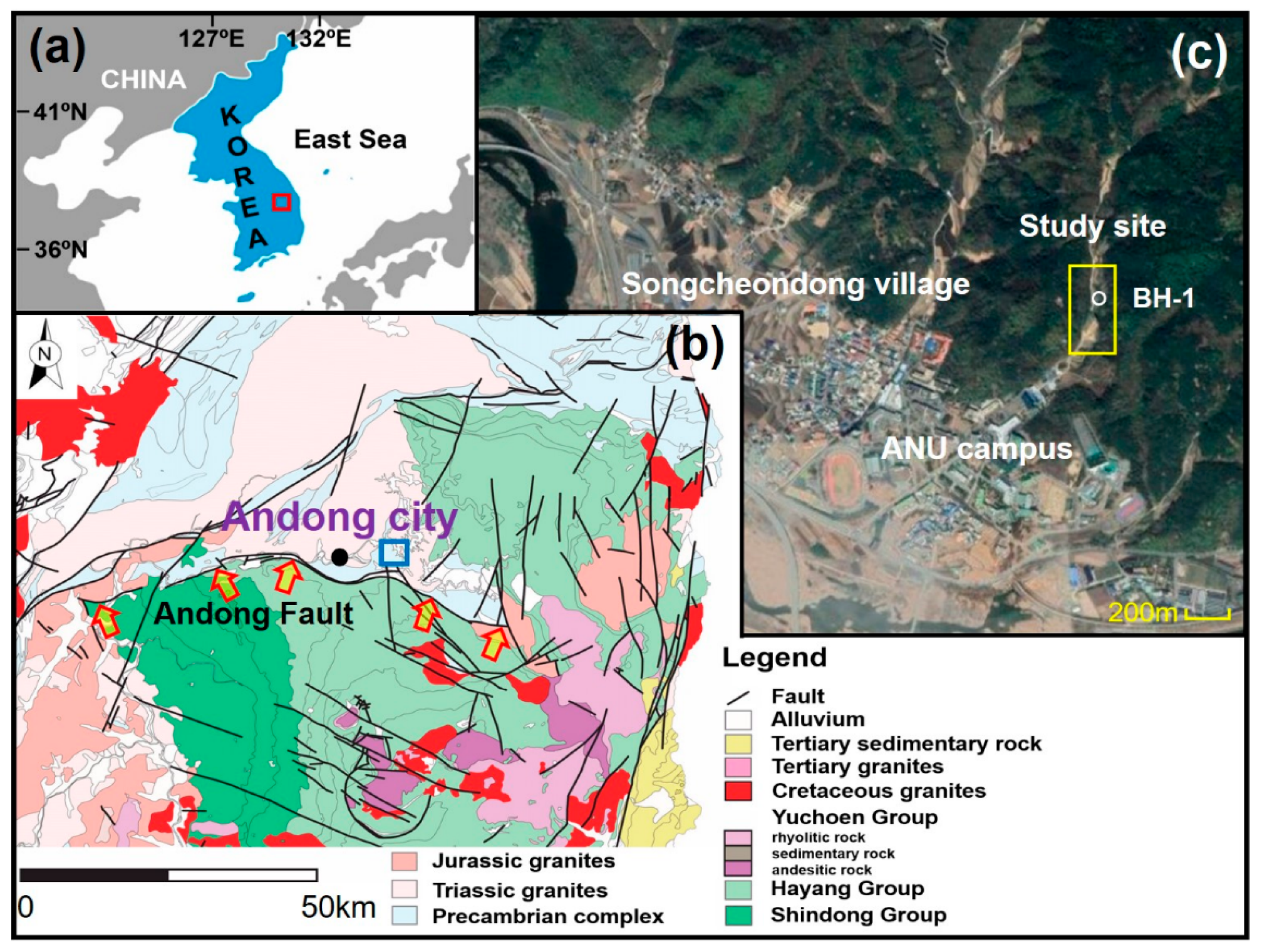
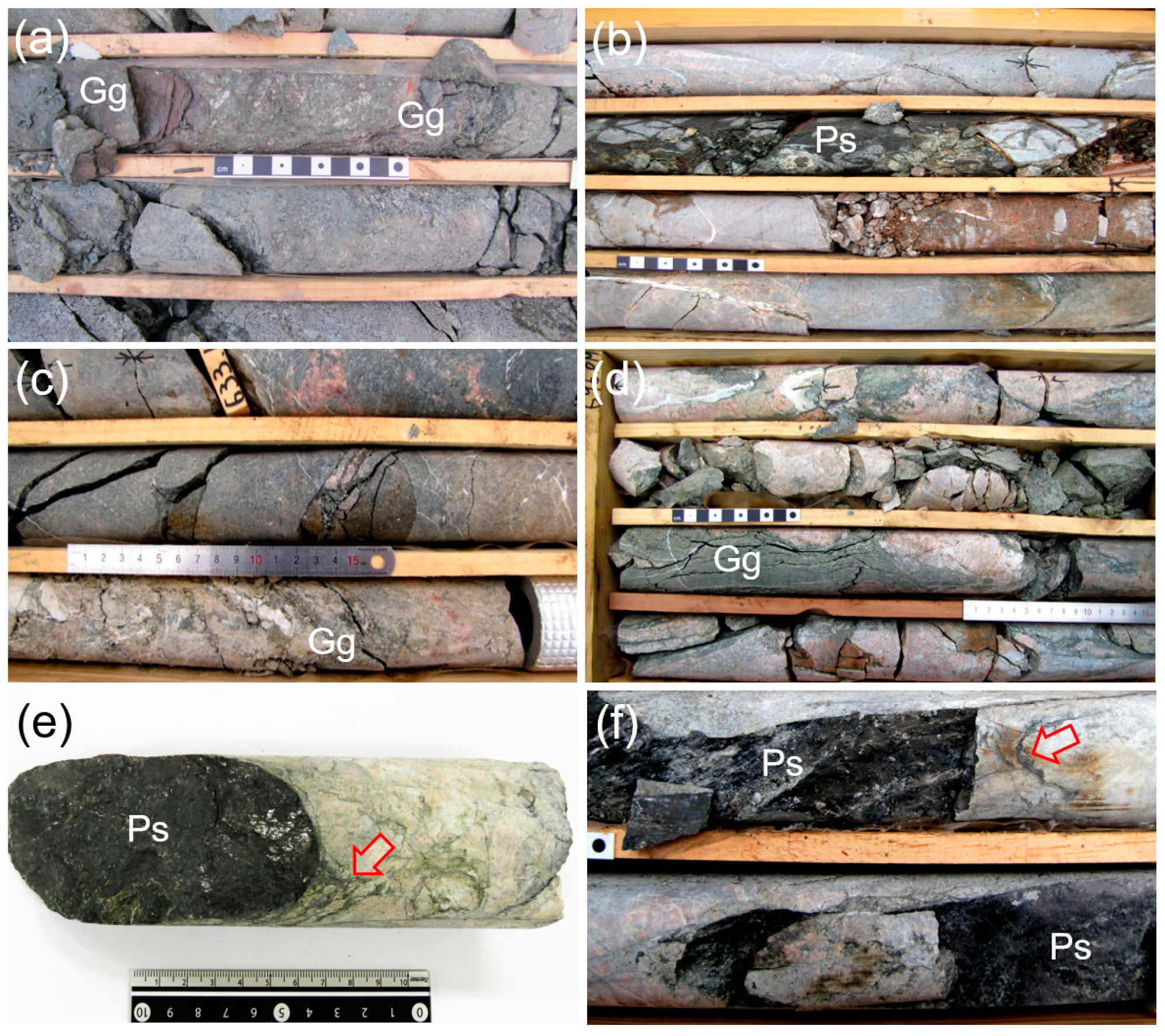
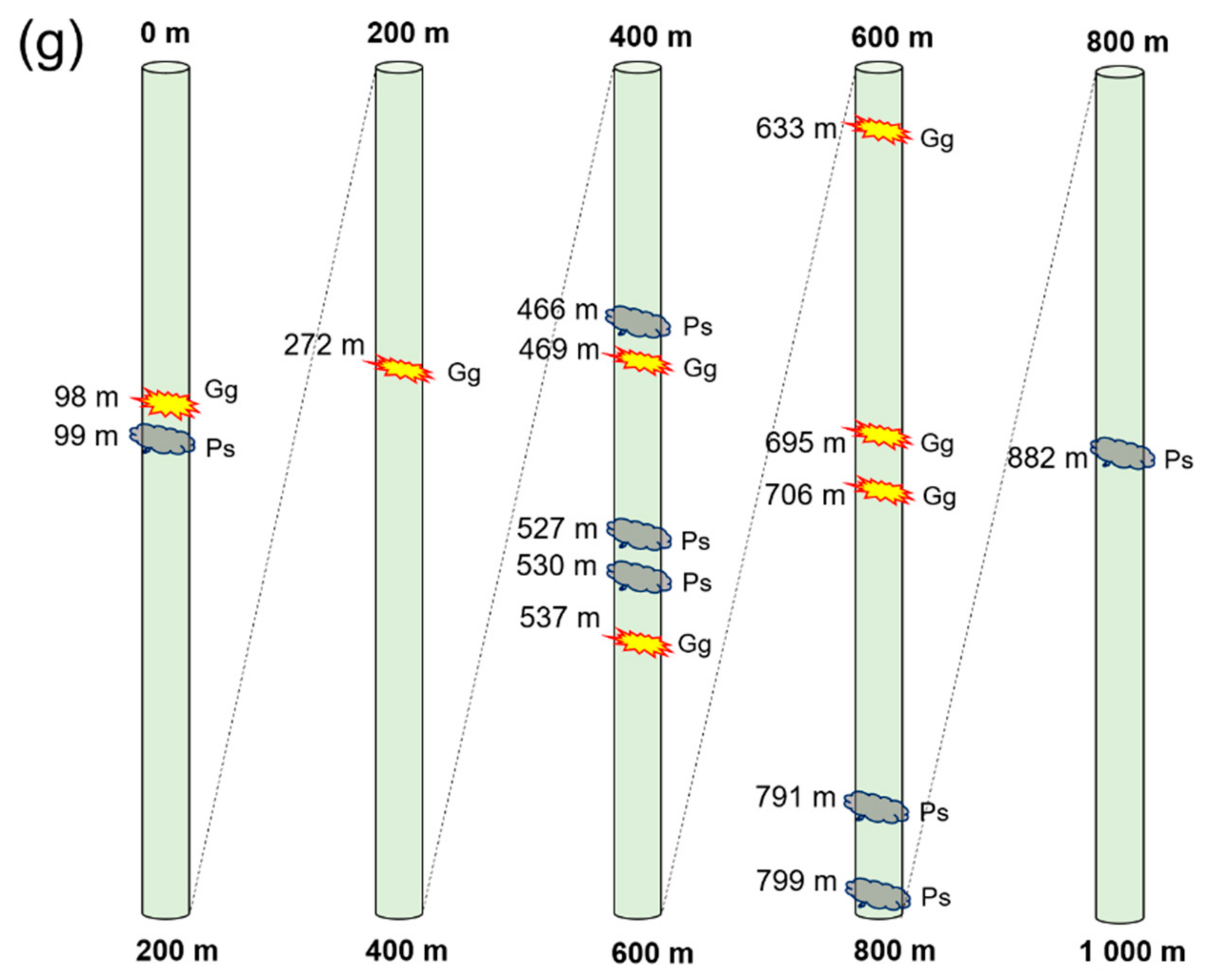
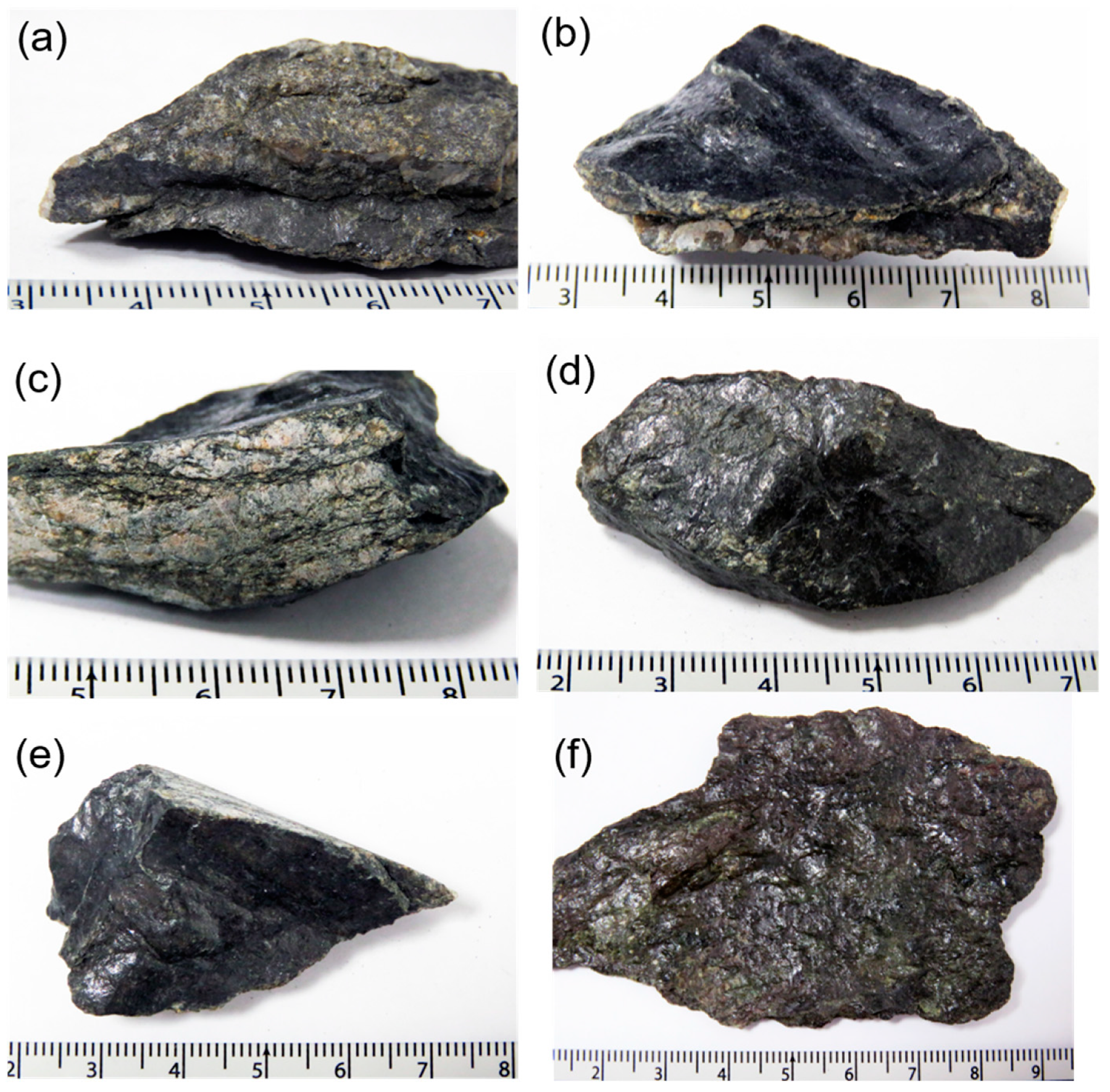

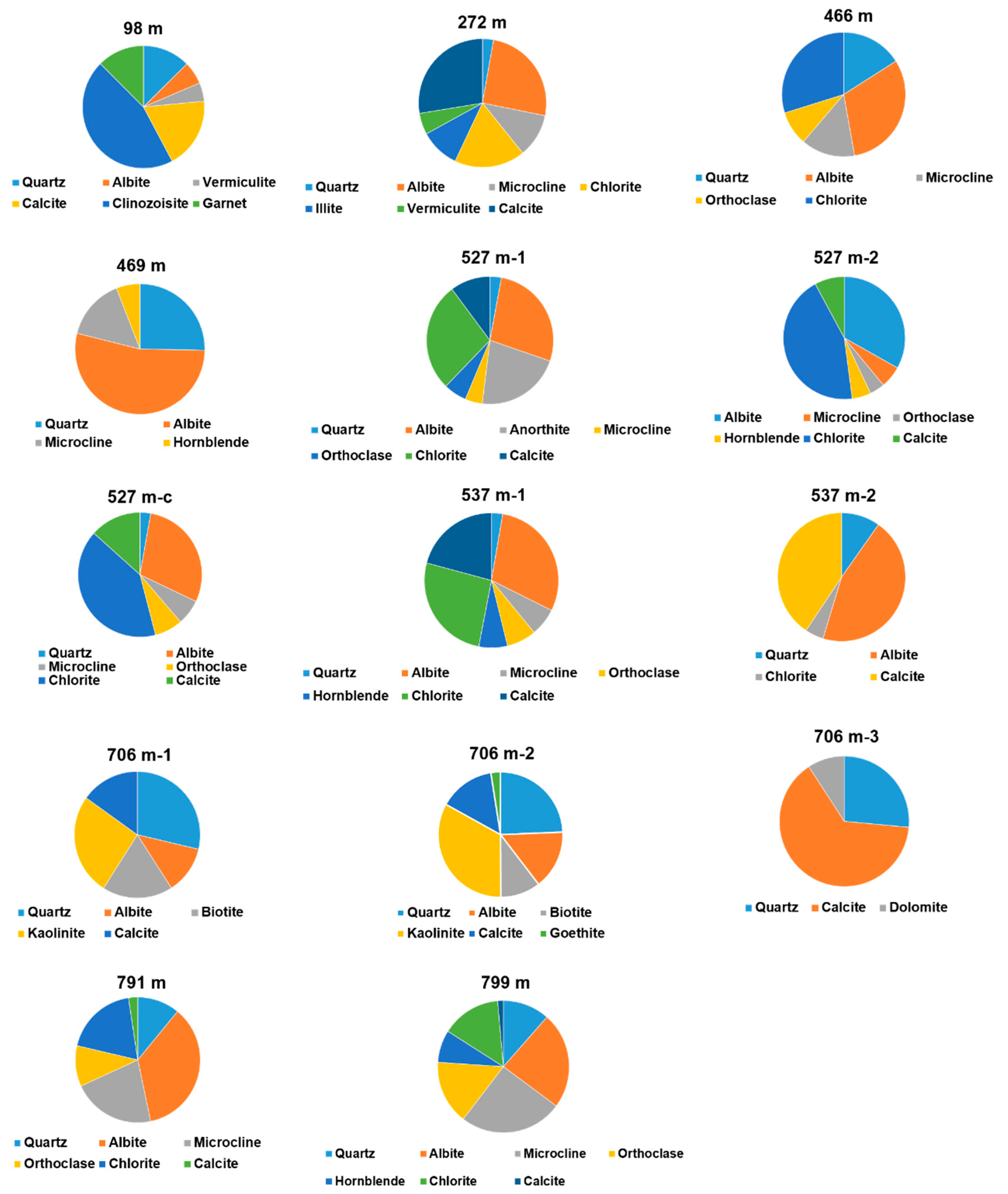
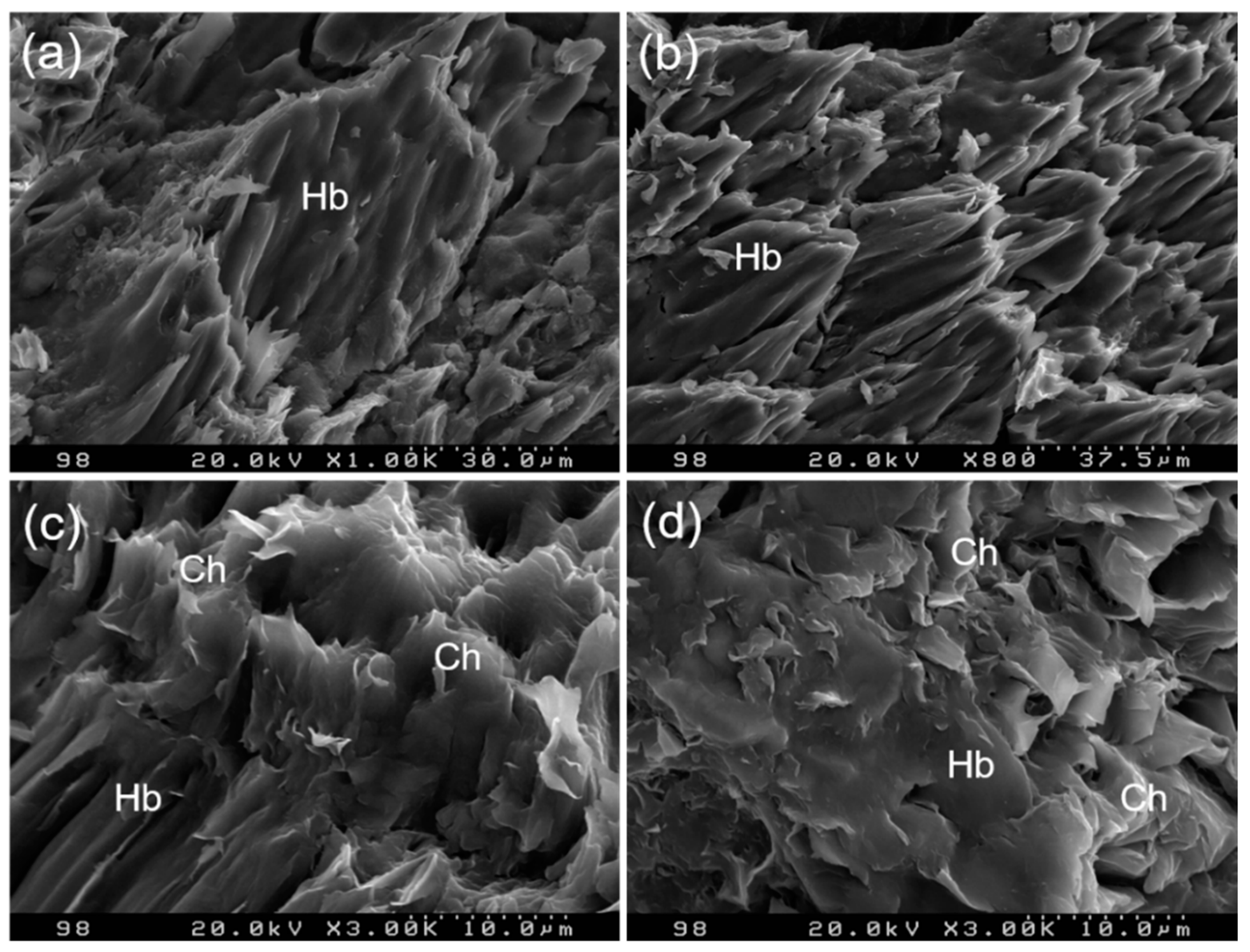
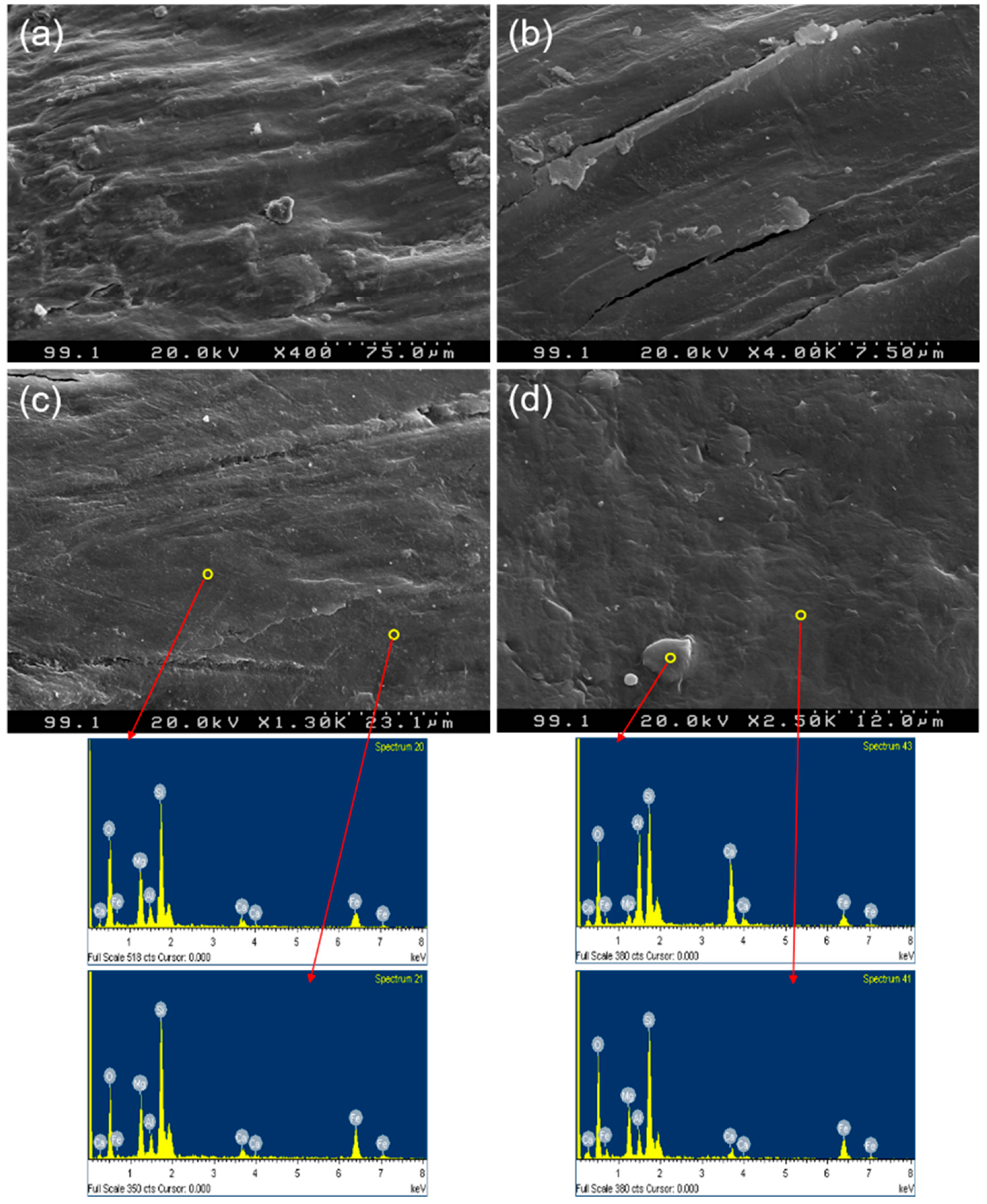


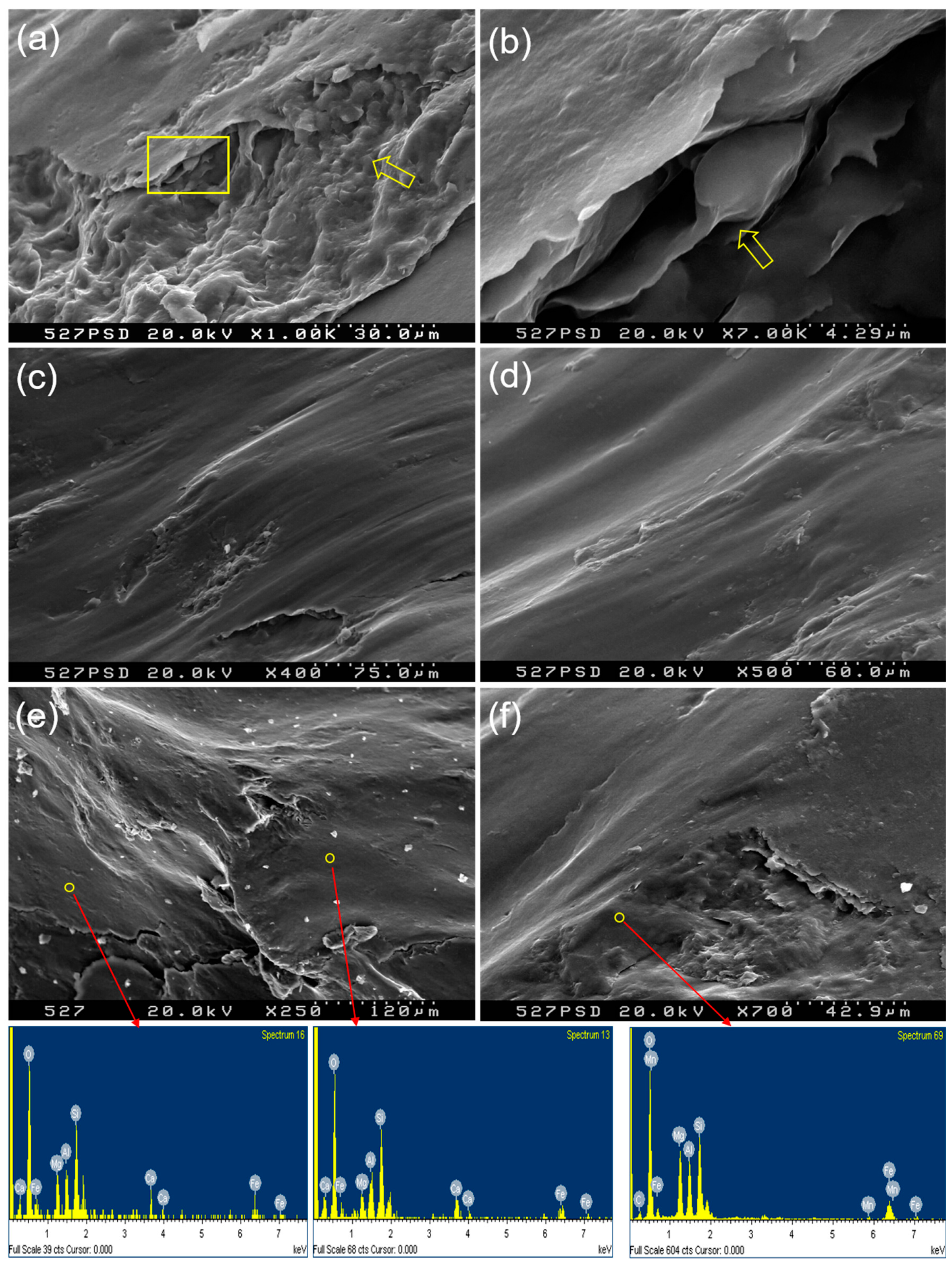


Publisher’s Note: MDPI stays neutral with regard to jurisdictional claims in published maps and institutional affiliations. |
© 2020 by the authors. Licensee MDPI, Basel, Switzerland. This article is an open access article distributed under the terms and conditions of the Creative Commons Attribution (CC BY) license (http://creativecommons.org/licenses/by/4.0/).
Share and Cite
Choo, C.O.; Jo, S.H.; Lee, S.-Y.; Lee, S.-E.; Jeong, G.-C. Characterization of Pseudotachylite and Fault Gouges in Drill Cores from Andong, Korea and Its Implications for Paleo-Earthquakes. Sustainability 2020, 12, 10421. https://doi.org/10.3390/su122410421
Choo CO, Jo SH, Lee S-Y, Lee S-E, Jeong G-C. Characterization of Pseudotachylite and Fault Gouges in Drill Cores from Andong, Korea and Its Implications for Paleo-Earthquakes. Sustainability. 2020; 12(24):10421. https://doi.org/10.3390/su122410421
Chicago/Turabian StyleChoo, Chang Oh, Su Hyeon Jo, Sang-Youl Lee, Sang-Eun Lee, and Gyo-Cheol Jeong. 2020. "Characterization of Pseudotachylite and Fault Gouges in Drill Cores from Andong, Korea and Its Implications for Paleo-Earthquakes" Sustainability 12, no. 24: 10421. https://doi.org/10.3390/su122410421
APA StyleChoo, C. O., Jo, S. H., Lee, S.-Y., Lee, S.-E., & Jeong, G.-C. (2020). Characterization of Pseudotachylite and Fault Gouges in Drill Cores from Andong, Korea and Its Implications for Paleo-Earthquakes. Sustainability, 12(24), 10421. https://doi.org/10.3390/su122410421






